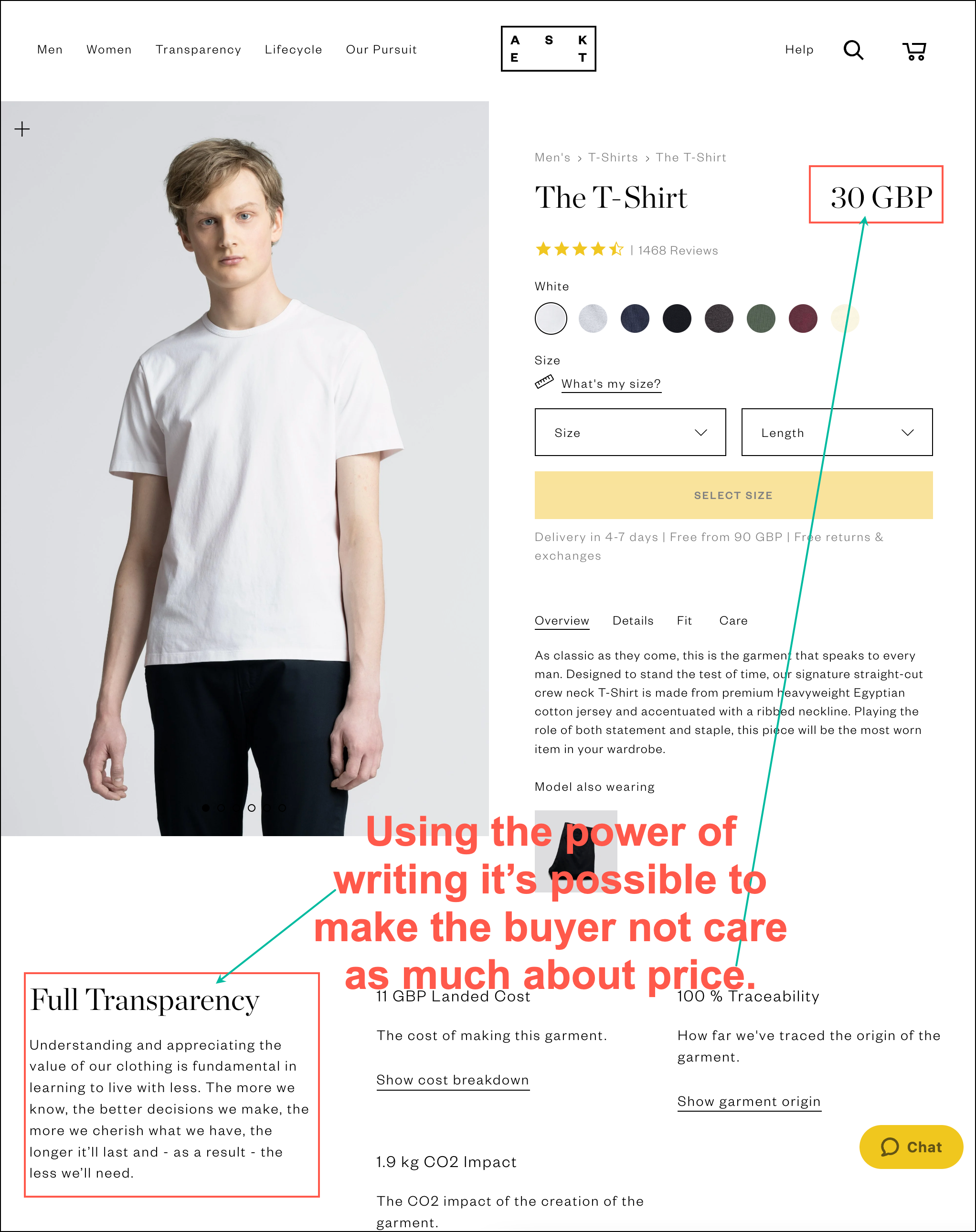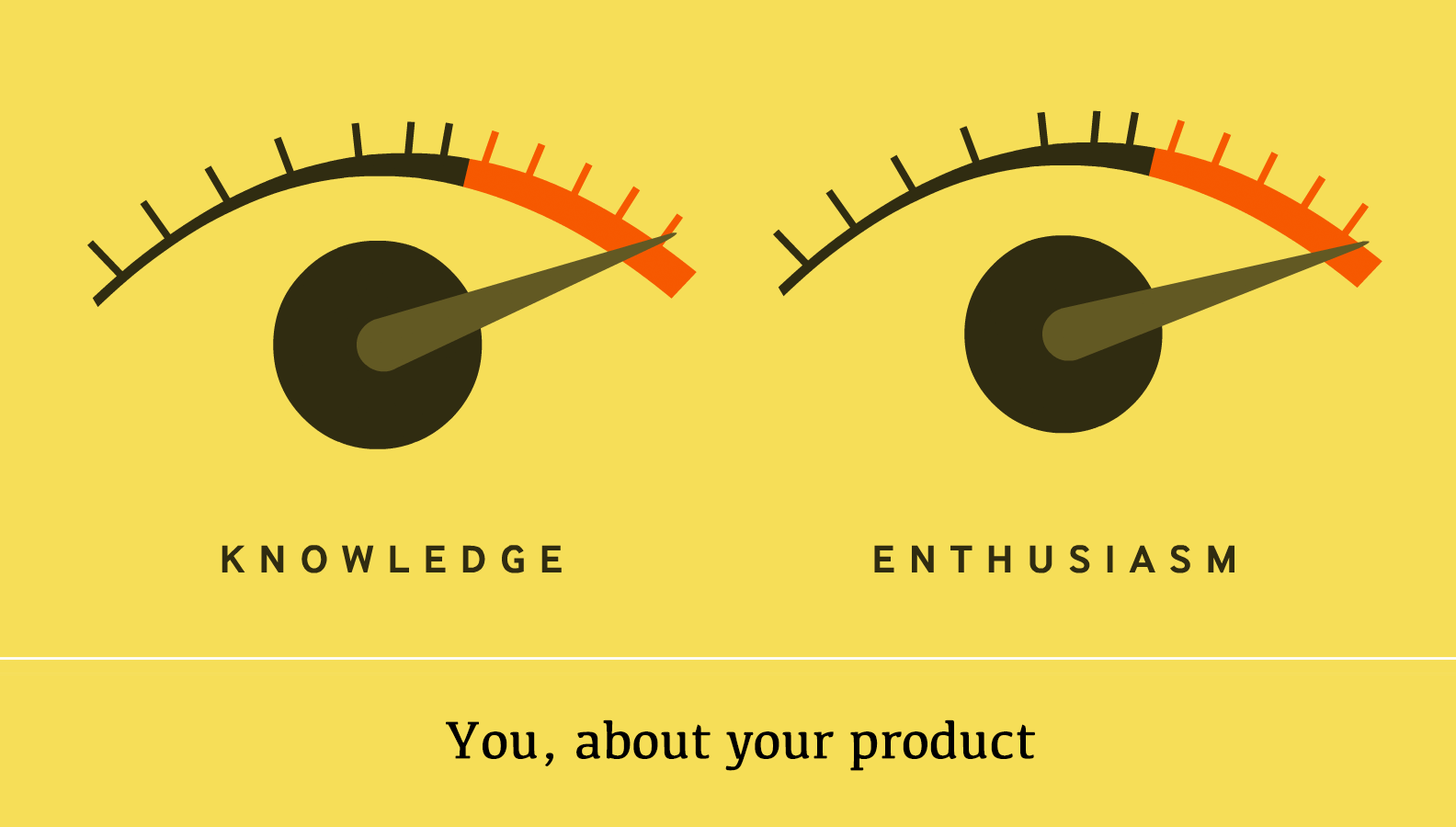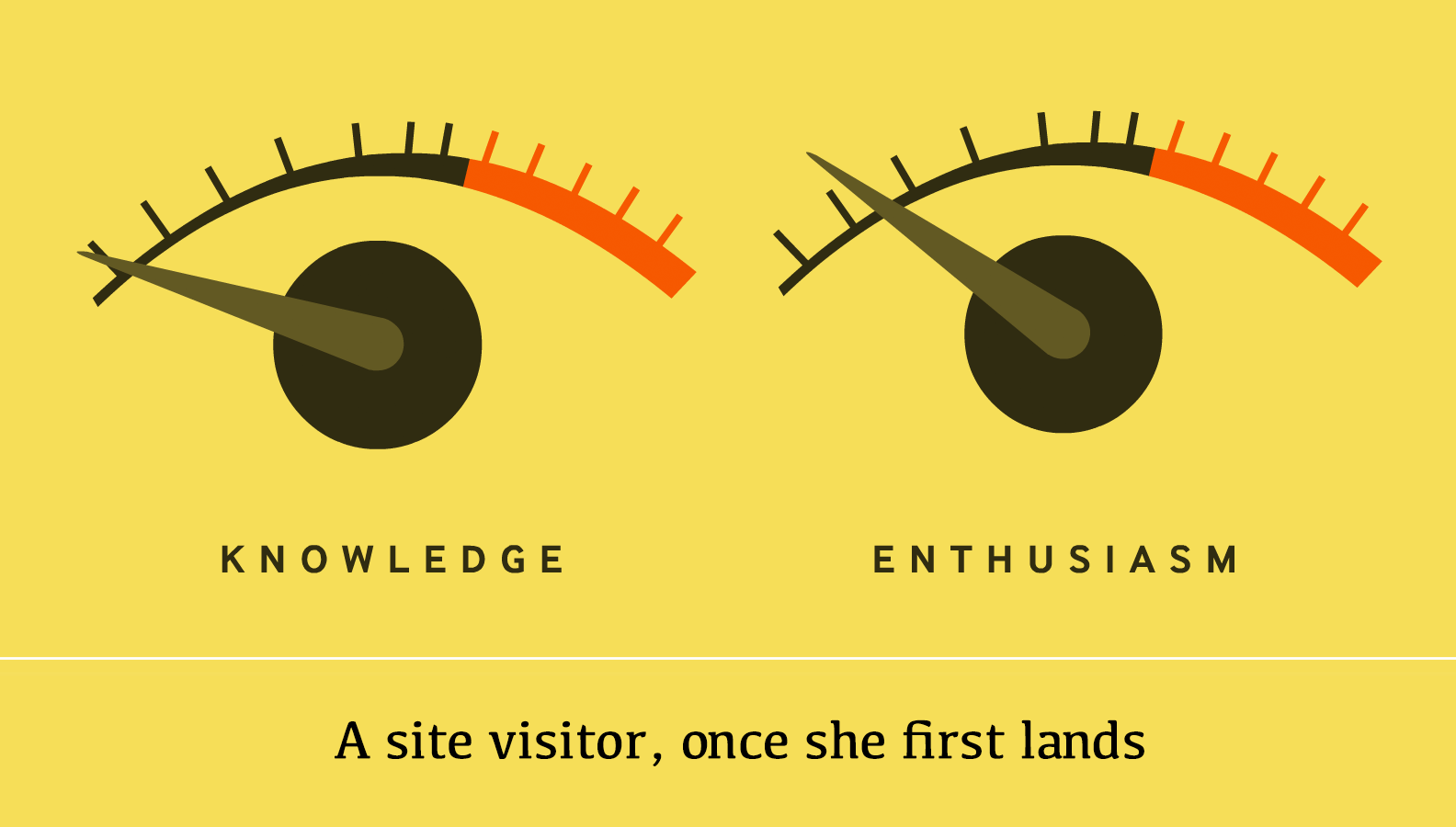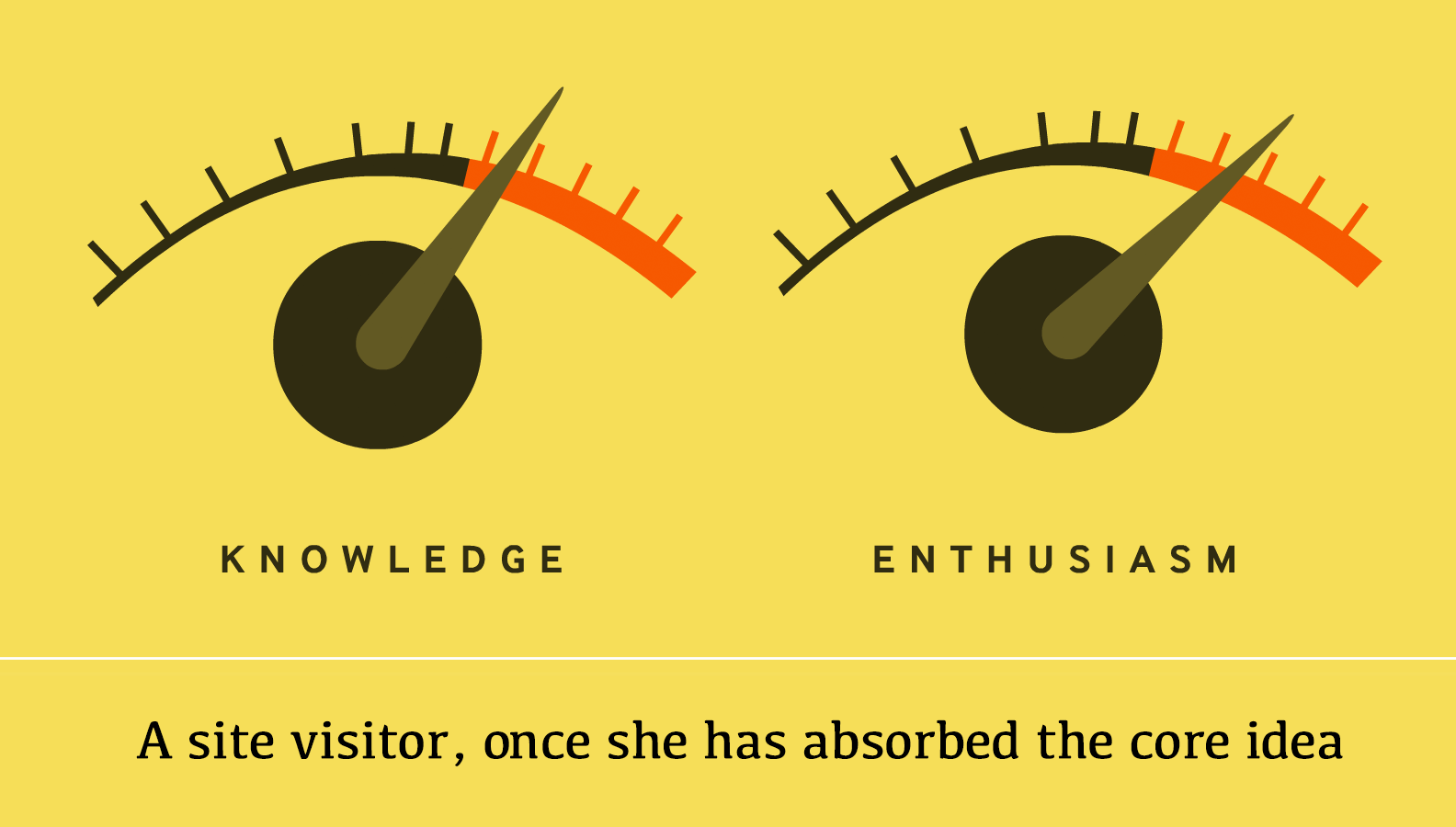Blog
Conversion Copywriting Mindset That Will Make You $$$
Conversion copywriting has one ☝️ job– getting prospects from “this is fascinating” to “where do I enter my credit card number?”
Conversion copywriting gets passed around like this new thing but it’s not much different from the old thing: plain old copywriting.
As I see it the key distinction is that the conversion in conversion copywriting is all about online conversions. If the written pitch involves some online behavior tied to a specific business goal it’s called conversion copywriting.
There is no great conversion copywriter who isn’t also just a straight-up great copywriter.
In this article, we’re going to share everything we know about conversion copywriting.
But before we go deep into the topic let’s take a bigger picture view– let’s study the history of copywriting.
The (Abridged) History of Copywriting
Copywriting is an interesting topic because it mashes together the disciples of writing and marketing. Writing that is designed to get consumers to part with their hard-earned money is copywriting. It very much has a sales role (even though many copywriters cringe at the suggestion).
A discovery was made in China. It was a copper printing plate and it dated from the Song dynasty (960 to 1279). What’s fascinating is that this printing plate was used to print posters with a rabbit logo + the text “Jinan Liu’s Fine Needle Shop” + this sales copy: “We buy high quality steel rods and make fine quality needles, to be ready for use at home in no time” (source)
Jinan Liu was on to something, and for the next 800 years, brands were effectively just doing their own advertising.
But at some point, businesses realized that the ad copy they were writing stopped pulling as well as it used to. Copywriting specialists are about to enter the scene.
Moving Target
The thing about copywriting is that its effectiveness is a moving target. When the consumer isn’t used to being pitched, just drawing their attention to availability (like the needle shop ad mentioned above) is enough. But imagine if Jinan Liu was competing with 34 other local needle shops and her competitors noticed and copied her quality message. Would that ad still work? Nope. Jinan Liu would need to uncover a new Selling Angle. Think of a Selling Angle as a hook🪝to capture the buyer’s attention. It’s discussed in great detail in CHAPTER 4 but you can take a sneak peek: Selling Angle.
In order to constantly churn out new ads, the business either had to spend more time thinking of ad concepts and figuring out where to place them, or they could focus on what they were good at (needle making) and let the writing specialist take care of the advertising copy.
This is how the modern agency was born in 1864 and it went by the name J. Walter Thompson. These guys understood the power of copywriting as you can see from an ad for their own services:

J. Walter Thompson began as an advertising company (later incorporated in 1896) by American advertising pioneer James Walter Thompson. His agency became THE primary seller of advertising space in many American magazines and periodicals—and by 1889, 80% of U.S. advertising was placed through J. Walter Thompson (source). He understood audience and product fit…
With the birth of newspapers and magazines we now, for the very first time, had a way to target very specific types of buyers. People who read Scientific American were quite different from people who enjoyed Godey’s Lady’s Book. This took copywriting to a whole new level. We were no longer writing for all types of buyers. We were writing for buyers with very specific behavioral profiles.
Why Conversion Copywriting is THE way to Grow Sales
There are many ways to optimize conversion rates but adjusting words is the most energy-efficient. Sure, you could redo a photoshoot or update your product packaging but those options are expensive and time-consuming.
But words are easily malleable. If you feel yoursales pitchisn’t emphasizing the right details you can easily construct a new version and simplyA/B test it.
One of the amazing powers of conversion copywriting is that it has the ability to make your buyer price insensitive (click to zoom):

This is what makes conversion copywriting so powerful.
But in order to truly maximize impact, we need to crawl into the heads of our target buyers.
How Conversion Copywriting and Buyer Psychology Relate
Conversion copywriting and buyer psychology should be treated as synonyms because one doesn’t make sense without the other.
To sell an electric toothbrush to a buyer who has never used one, and is quite OK with their non-electric one, the marketer has to rely on buyer psychology.
First, the marketer has to figure out how to get the buyer’s attention since she isn’t looking for an electric toothbrush. He could use ad copy that says something like: “Toothbrush technology hasn’t changed in 20 years. Here’s why you should be concerned about this.“
Next, he needs copy that builds a case against non-electric toothbrushes. But he can’t jump into his spiel the moment the visitor lands– that would come across as too pushy. He needs to start by reflecting on what the buyer knows– that non-electric toothbrushes work.
He’s getting the reader to gently nod in agreement. After earning a few nods of agreement he can start talking about the incredible obstacles they had to navigate to bring this electric toothbrush model to the market. Next, the marketer is going to have to get our buyer excited to want to try our invention and pay for it today.
None of what’s described above is possible if the marketer isn’t perfectly tuned into the subconscious decision-making process of the buyer. The marketer has to understand the psychology of the buyer.
How Marketers Think About Conversion Copywriting
It isn’t nice to generalize, but based on the conversion copywriting we see on eCommerce sites it’s clear that most marketers rely on quick product explanations. Let’s see a practical example.
Beachwaver is an incredibly successful DTC brand and this is their bestseller. We aren’t suggesting they are the only site that is falling for this trap. We’re using their site to make a bigger point. Click the image to see a zoomed view:
How To Think about Conversion Copywriting
The reason why the best-selling page on Beachwaver has the description shown in the screenshot above is that marketers have been wronglytaught that their job is to present features and benefits. But describing features and benefits isn’t enough if the goal is to see this: 💳
The marketer’s job is to pass their enthusiasm onto Healthy Skeptics and move the needle.



As marketers, we’re using copy to construct a Sales Pitch. This idea sits at the heart of our entire process and you can learn all about it in this core article: Your Most Valuable Asset: Your Sales Pitch.
Marketers don’t like this “sales pitch” association but the reality is that marketers and salespeople are siblings.
And the family tree doesn’t end there—there’s room for the debaters and lawyers of the conversion team.
Debate Team Meets Conversion Copywriting
Copywriters who can learn the techniques debaters use to build arguments will simply convert more first-time buyers.
One of their superpowers is their ability to deconstruct the marketing problem and become subject matter experts. Another quality I admire about debaters is their amazing ability to argue one side of the argument, and then, seamlessly, shift sides and make an equally compelling case for the opposing view. This isn’t just natural talent, it’s muscle conditioning and we talk about it further in this article: Debating and Conversion Copywriting.
What Do Conversion Copywriters Have in Common With Lawyers?
A lot. They’re part of the family. Just as there isn’t a distinction between conversion copywriters and salespeople, I also don’t see any difference from your suit-wearing lawyer uncle. Lawyers get a bad rap, but we hope to change your mind in this article: What Do Conversion Copywriters Have in Common With Lawyers? Successful lawyers are suspiciously good at carefully constructing the case. They know what is revealed first, and what comes later. Conversion copywriters should be using this technique too. Once you realize that copywriting isn’t a creative output, but a strategy it frees your mind.
How Storytelling Connects with Conversion Copywriting
We’ve already seen how conversion copywriting is basically a way to deliver your sales pitch. If the copywriter is analogous to the salesman, we might as well incorporate his favorite trick– storytelling. Turns out, there is a deep evolutionary foundation for storytelling. It’s something that goes back thousands of generations, way before we had the written medium.
Exciting Times
We understand the power of stories intuitively. Recent scientific work is adding more data to support how stories can alter our behaviors and attitudes. It’s all very exciting.
Oxytocin (also called the love hormone) is a key brain chemical. It’s produced when we are feeling a sense of safety and care. Scientists ran an experiment where they recorded the baseline oxytocin levels of subjects before the experiment. They then exposed them to an emotional story and then measured their oxytocin level, and guess what? It was up. Further, the amount of oxytocin released was an indicator of the participant’s willingness to take action. Getting the shopper to take action is a key component of conversion copywriting.
We explore the topic of storytelling in marketing in this article: Storytelling in Marketing.
Marketing Ethics: Persuasion Vs Manipulation
When you read the two sections above where we compared copywriters to lawyers and debate teams, how did it make you feel? Many copywriters are turned off by this comparison. Those copywriters are wrong and in this article, we hope to change your mind too: Marketing Ethics: Persuasion Vs Manipulation.
For what it’s worth, I’m really glad you stuck around and didn’t bail on us. Thank you.
There is an aspect of our approach to conversion copywriting that our colleagues don’t like and we discuss that next.
Conversion Copywriting Without User Research
Most marketers don’t do conversion copywriting how we do it. The best marketers will tell you, “you can’t formulate any copy ideas without first doing tons of user research.”
There is no doubt that user research is powerful. It has its place, we just don’t think it’s the first thing the marketer should do. We neatly present our claim in this case against user research article.
Recap & Next Steps
Wow, look at you, you’ve come to the end of Chapter 3. This is a key chapter because it talks about the most important tool in our toolbox and the one we use most often– conversion copywriting. We covered the history of conversion copywriting. Then we showed how marketers typically think about it, and how you should think about it– like a sales pitch.
We also brought our debating team and lawyers into the discussion. And ended by building a case against user research.
In Chapter 4 we’re going to show where you need to deploy your sales pitch for the maximum conversion impact: CHAPTER 4: Product Page Optimization







Comments 19
Hi Rishi,
I would love to see some examples if you have them handy.
Thanks for doing this!
ReplyRishi Rawat
Hey, Andrew. I’ll email examples on my Monday newsletter.
ReplyShow more examples
ReplyRishi Rawat
Hi, Thomas. The examples will be in your inbox on May 4th.
Replyshow more examples/samples
ReplyRishi Rawat
The examples will be in your inbox on May 4th.
ReplySHOW EXAMPLE
ReplyRishi Rawat
Hi, Eric. The examples will be in your inbox on May 4th.
ReplyNice list!
Show sample…
Hate bad news (if I can pick one).
ReplyRishi Rawat
Hey, Chris. Curious to see if you change your favorite once I email the examples. Check your inbox on May 4th.
ReplyShow example (please).
Also, how would web copy be “possessive”?
ReplyRishi Rawat
Ron: Also, how would web copy be “possessive”?
ReplyRishi: I’m putting together a list. Will show you!
Rishi Rawat
Hi, Ron.
1: The idea behind the possessive strategy was this: we love buying but hate it when it feels like our options are being limited. We ultimately dropped this from our list.
Reply2: I’ll email you examples for the remaining strategies on May 4th.
I love this. What a cool way of addressing a mental block. I’ve never seen one of these next to a shipping cost, but it really make a a lot of sense. Well done once again my friend! This was a fun read!
ReplyRishi Rawat
So glad you liked it, Tommy.
ReplyThank you, Rishi, for the whole series. I have started the task of rewriting copy for all my products. I was of the school of thought that people don’t read! So funny to think that, but that is what I was taught years ago while running my last company. Now, I look forward to crafting a copy as good as my product!
ReplyRishi Rawat
Hi, Ida. I’m so happy you found the series useful. My advice is to start with your bestseller. Just focus on developing the best story for that product page. Work on it for a day, then don’t look at it for a few days (gestation period), then return to see how it feels. Copywriting is a delicate art, you don’t want to say too much, or too little.
ReplyHi rishi,
could you please some more examples
ReplyRishi Rawat
Hi, Shashank. Let me know what examples you are looking for and I’ll see if I have them in my database.
Also, if you want examples you should join my mailing list. I share conversion ideas (with examples) every Monday morning: https://frictionless-commerce.com/JOIN/
Reply